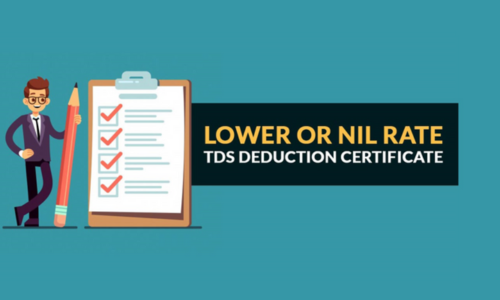In this article, we will discuss about...
Introduction
It’s May 2025, and the new financial year is already in full swing. If you’re an NRI thinking about selling your property in India, you’re probably wondering where to start. With recent changes in tax rules and the Union Budget, things can seem confusing.
Don’t worry — this guide is here to make the process clear and simple. Whether you’re figuring out taxes or handling paperwork, we’ll walk you through everything step by step.
Don’t let reading hold you back, Watch our video instead
Two Ways You Can Sell Property in India as an NRI
When selling property, NRIs usually have two options. Let’s look at both so you can decide what works best for you.
Option 1: Sell and Pay Full TDS (20–23%)
This is the more common method. Here’s how it works:
-
The buyer deducts 20%–23% of the total sale price as TDS (Tax Deducted at Source).
-
You file your Indian income tax return.
-
You claim a refund for any excess tax paid.

But here’s the problem:
-
Your money can get stuck for up to 1.5 years.
-
Refunds are becoming harder to claim.
-
If you have any pending tax issues, the Income Tax Department may not release your money.
-
There’s increased scrutiny and delays.
Option 2: Apply for a Lower TDS Certificate (Recommended!)
This is the smarter choice — and the one we recommend.
If your actual tax liability is lower than 23%, you can apply for a Lower TDS Certificate from the Income Tax Department. This means the buyer will only deduct tax on your actual profit, not on the full sale amount.
Example:
If your actual tax rate is just 5%, the buyer deducts only 5% instead of 23%. You get the rest of the sale amount immediately.

Why this is better:
-
You get more money upfront.
-
No long wait for refunds.
-
You can reinvest your money and earn interest while others wait.
Step-by-Step: How to Get a Lower TDS Certificate
Here’s a simple breakdown of the process:
Step 1: Sign a Memorandum of Understanding (MoU)
This is a basic agreement between you and the buyer to begin the sale process.
Tip:
Keep the token amount low (₹1 lakh or less). If you haven’t received the Lower TDS Certificate yet, you’ll have to pay 23% TDS on any token amount received!

Step 2: Buyer Checks Legal and Financial Details
The buyer will:
-
Verify property documents
-
Confirm legal ownership
-
Assess loan eligibility
Once this is complete, they typically pay 20% upfront from personal funds.
Step 3: Sign the Agreement for Sale
Both parties now sign the Agreement for Sale, which is often registered.
The buyer can use this document to apply for a home loan for the remaining amount.
Step 4: Buyer Gets a TAN (Tax Account Number)
Before deducting TDS, the buyer must obtain a TAN. (Note: This is not the same as a PAN.)
We can assist with the application. Our buyer-seller compliance package costs approximately ₹7,000 and covers all the necessary work.
Step 5: Submit Required Documents
To apply for the Lower TDS Certificate, you’ll need:
1. Proof of NRI Status
-
Passport copy with entry/exit stamps
-
You must have lived outside India for 182+ days in the past year
2. Property Purchase Agreement
3. Proof of Payment
-
Cheques, bank statements, etc.
These documents help calculate your actual profit, which determines the correct TDS rate.

Step 6: We File the Application Online
Once we have all your documents, we submit the application online to the Income Tax Department.
-
It typically takes 30–45 days to receive the certificate.
-
If the tax office requests additional information, we’ll handle that too.
Step 7: Give the Certificate to the Buyer
After approval, share the certificate with the buyer. They’ll deduct TDS at the lower approved rate and pay the balance directly to you.
No chasing refunds later!
Step 8: Final Sale – Disbursement and Sale Deed
Once everything is in place:
-
The bank releases the buyer’s loan
-
You hand over the property
-
Both parties sign the Sale Deed — the final legal step
Key Things to Remember
-
MoU doesn’t need registration. It’s just a short, informal agreement. We’ll provide a template.
-
Always sign a Sale Deed. Even if it’s not mandatory in your state, it’s the best way to close the deal properly.
-
Lower TDS saves time and money. You avoid delays and the hassle of chasing refunds.

